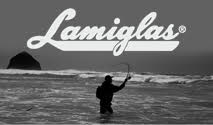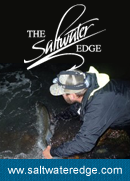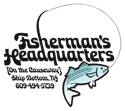Editor’s Note
This blog posts is by Charles Witek, originally posted on his site One Angler’s Voyage
I though we should share them so you can see that
A)There is something in the water that NJ “representatives” drink,
B) Tom Fote never meet striped bass he did not want see dead
C) For more on so called “recreational” representation read John McMurray new blog HERE…that will make your head spin. Remember the only good fish is a dead fish
SOMETHING IN THE WATER
There are a lot of refineries and chemical plants near the New Jersey coast, and it wasn’t too long ago that the Delaware River, which runs along the western border of that state, was so polluted that anadromous fish had to think twice before trying to make it upstream.
Sometimes, after coming away from a fisheries management meeting, you have to wonder whether some of that sort of stuff is getting into the state’s drinking water, because it’s hard to come up with any better explanation of why New Jersey is so often radically out of step with fisheries managers from the rest of the coast when it comes to conserving fish stocks.
That really stood out last October, when the Atlantic States Marine Fisheries Commission’s Striped Bass Management Board met to consider harvest reductions needed to rebuild the declining striped bass stock. Representatives from just about every state with a coastal striped bass fishery recognized that reductions were needed; anglers all along the coast overwhelmingly supported dropping the bag limit from two fish to one and increasing the minimum size from 28 to 32 inches.
However, the 28-inch minimum size had prevailed on the coast since 1995, and biologists suggested that, from a statistical standpoint, it made sense to leave the size limit alone. Managers took that advice and adopted such size limit which, coupled with a 1-fish bag, would probably reduce landings by about 31%, comfortably above the 25% reduction that was the minimum needed to reduce fishing mortality to the target level.
Thus, a motion was also made that would require that if any state proposed alternate regulations, such regulations would have “conservation equivalency” to one fish at 28 inches; that is, they would have to reduce landings by 31%.
Unfortunately, ASMFC had earlier voted to reduce coastal harvest by 25%, and the New Jersey commissioners would not let that go. Tom Fote, the state’s governor’s appointee, objected loudly, saying
“We just voted on a 25 percent reduction; and now because you’re picking out one fish at 28 inches, you’re basically saying that we have to have a 31 percent reduction, which is 6 percent greater than we voted on and we went through the plan. This makes no sense whatsoever…
“It might be perfectly acceptable for [another state’s] fishermen to have one fish at 28; and that is great, let them go one fish at 28; but we have to accommodate the fishermen in our state, the charterboat, the partyboat and the recreational guys, and the guys that fish from the beach. We need that flexibility as long as we make the 25 percent reduction. I didn’t [vote?] for a 31 percent reduction; I don’t think anybody around this table voted for a 31 percent reduction…”
For whatever reason, the management board went along, and ended up passing a motion that read
“to approve Option B-1, one fish at 28 inches, with all conservation equivalent measures equaling a 25 percent or greater reduction in harvest.”
It seemed that the New Jersey folks got what they wanted, but when the roll-call vote was taken, they still decided to vote against…
It didn’t take long to see where New Jersey was headed when it argued for the smallest possible harvest reduction, for in the months to come, when representatives of the northeastern states came together in an effort to maintain constant regulations throughout the region, all of the states from Maine to New York agreed on one fish at 28 inches for everyone. But New Jersey went its own way, playing with the numbers until they could find a way for their anglers to take not one striped bass, nor even two, on every trip, but three, one measuring between 28 and 43 inches, one at least 43 inches in length and, beginning on September 1 of this year, a third fish between 24 and 28 inches in length–a fish that, most likely, had never had even one chance to spawn.
Thus, while anglers in most other coastal states may take home only one adult fish, in New Jersey, they get to kill one average adult fish, one prime spawner and one immature bass that will never get to contribute to the future of the stock.
Because down in New Jersey, any fish is a good one as long as it’s dead…
That being the case, I wasn’t surprised to see, in the wake of the joint Mid-Atlantic Fishery Management Council/Atlantic States Marine Fisheries Commission decision to reduce summer flounder landings, that the Recreational Fishing Alliance, a New Jersey organization if there ever was one, put out a press release condemning such action.
The title was typical bluster: “Vote to torpedo recreational fishing community. Council and Commission turn deaf ear to floundering industry.” Even so, it was better than the text, which was little more than an extended, petulant whine, lamenting that the Council and ASMFC followed the scientific advice to reduce summer flounder landings in the face of a population decline.
To be fair, there weren’t any flagrant untruths in the release, although it skipped over so many important facts that the whole truth was still hard to find.
For example, it lambastes the Council for making a 29% landings cut, while ignoring the fact that a 43% cut was originally proposed, but Council and Commission staff, working with the members of both management organizations, found a way to pare that down by one-third in order to reduce any resulting economic pain.
That’s hardly turning a deaf ear to industry concerns.
The release says that
“12 members voted in opposition to a measure that would have led to a smaller, 20% overall reduction,”
which is true, but it failed to mention that the Council was legally barred from adopting harvest cuts any smaller than those recommended by its Science and Statistical Committee, which endorsed the 29% reduction.
Yes, there was a motion to remand the question to the SSC for further consideration, but that motion was essentially out of order, as it lacked any of the substantial grounds (SSC error, etc.) needed to justify such a remand.
Even had a remand occurred, the only way that the SSC could have limited harvest reductions to 20% would be to find that the science in the latest stock assessment was perfect—that there was no scientific uncertainty at all. And everyone–most particularly the SSC–knows that is not true.
The bottom line is that the 29% reduction was in accord with the best available science, and was clearly the right thing to do. It was overwhelmingly supported by Council and Committee members.
The effort to limit harvest reductions to 20% was effectively a New Jersey effort.
With respect to the Council, the motion to remand the question to the SSC was made by Jeffrey Kaelin, of the New Jersey delegation. The motion failed with only 5 votes in favor. Three of those votes were from New Jersey.
With respect to the Commission, the motion to remand the question was made by Tom Fote, the governor’s appointee from New Jersey. The motion failed when only New Jersey voted in support.
And even in the public comment period that preceded the vote, all three spokesmen who supported the remand came from—you guessed it—New Jersey.
Because no state but New Jersey tries so hard to kill so many fish. They seem constitutionally unable to comprehend conservation.
I’m not sure why that is.
I’ve spoken with folks from New Jersey–even have a handful of friends down there–who seem like normal people, with a normal desire to properly manage the fish that we pursue.
But I also know a lot of the folks who represent New Jersey on regional panels and in public forums, and they’re a completely separate breed, always trying to eke out a few more dead fish, regardless of the health of the population.
Maybe there’s something seeping into the water they drink that makes them think so perversely.
I don’t know about that.
But I do know that if they get their way, with stripers or weakfish, with fluke or with flounder, there will be a lot less in the water for folks to catch.












A well written and informative piece; albeit unfortunate that NJ has to have such a cavalier attidtude about a matter affecting striped bass and so many people in other Atlantic states.
↓I think I know why these folks always want that something extra. They would seem to be following the example of the UK and EU fisheries ministers, who after paying scientists to go out and gather scientific data, they then either choose to completely ignore it or simply “cook the books” with the information gained by the scientific investigations into fish populations.
↓At the end of the day, we can all blame the politicians etc, but the final responsibility of what is taken falls upon the individual angler.
Our bass in the UK don’t grow to anywhere near the US striped bass size and the same is true of our flounder. For instance, where I live in the UK, the minimum landing size is just 36cm /or 14 and 1/8th of an inch, even though the govts own website states that the average breeding size is 46cm or18 and 1/16th of an inch. – data obtained from – http://www.kentandessex-ifca.gov.uk/im-interested-in/angling/minimum-sizes/
My own feelings on the why’s and wherefore’s in all of this would likely see me on a charge for libel and slander, but that old adage about “if you want the truth of something, follow the money”, seems to ring true in all too many factors of life today 🙁
Ah New Jersey…party at the shore & no common sense. I don’t understand why the people put in place to protect our environment constantly fight the science behind wildlife preservation.
↓This type of allocation ism is exactly the reason why I do not belong to the RFA. Along with its support for a anti-hunting/fishing candidate for the governorship of Maryland..unbelievable!
↓If you go on any of the striped bass forums, the vast majority of NJ anglers are against our Tom Fote and our state going against the guidelines the rest of the states are following. The problem is that the people doing the voting (not publicly elected but rather appointed representatives) are doing what the party boat owners and tackle shops want, which is to allow more fish to be taken. Not fair to paint the fishermen here with such a broad brush because it is totally inaccurate to what 95% of the anglers here want.
↓